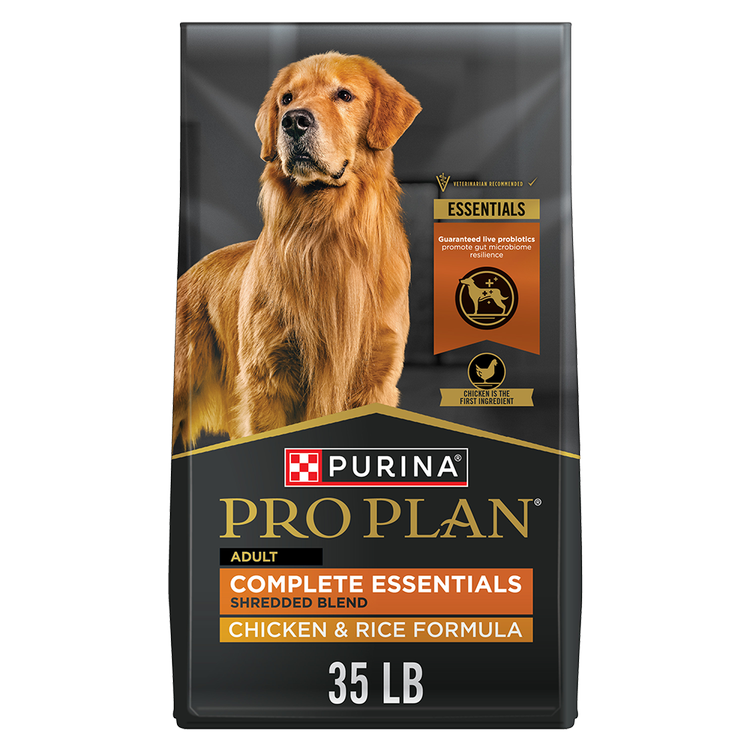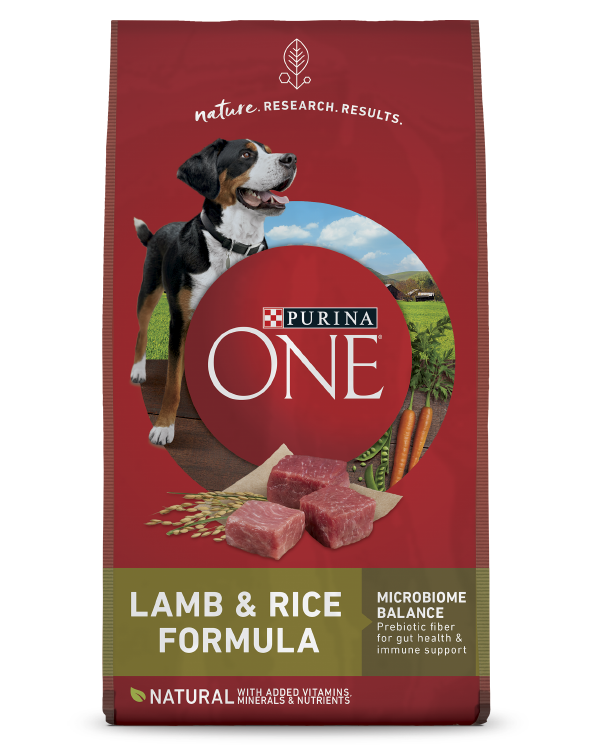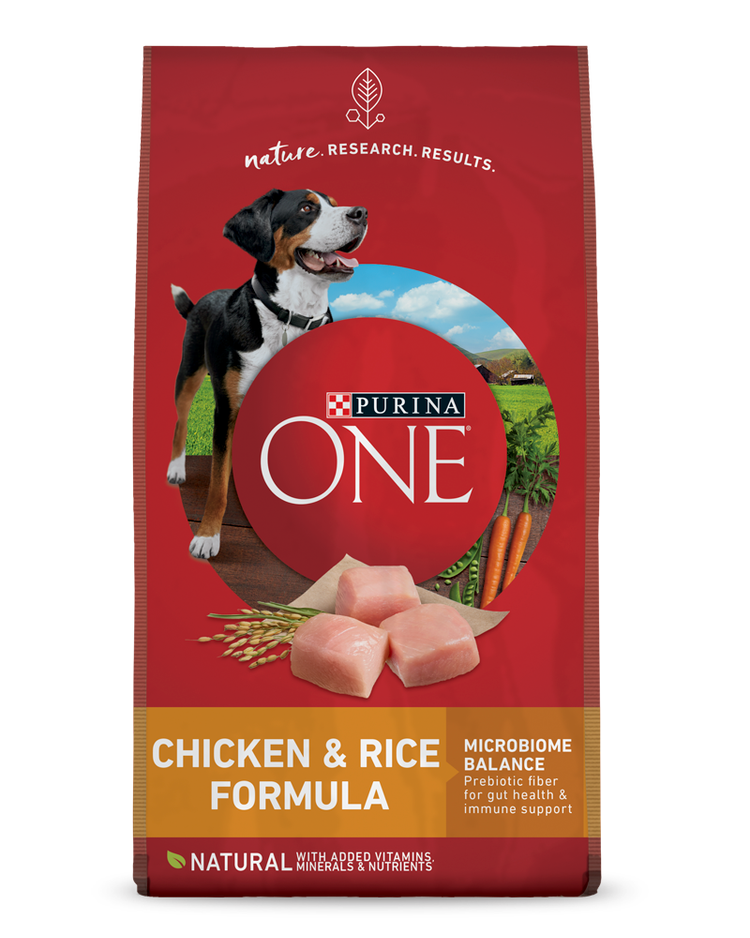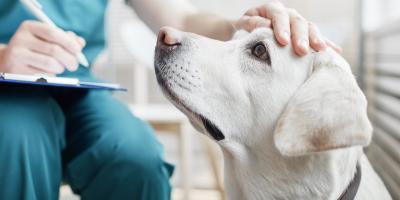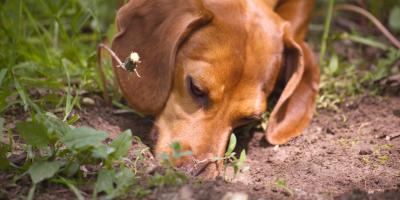Dog Shedding: Why is Your Dog Shedding So Much?

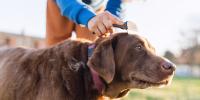
Dog shedding is normal, healthy behavior, but finding tufts of your pet’s hair may not always be a welcome surprise—especially if it’s all over your home.
You might be feeling overwhelmed because your dog is shedding a lot. Fortunately, there are ways to minimize the mess. From understanding why your canine companion sheds to practical tips on how to de-shed a dog, our guide can help.
If you’re wondering, Why is my dog shedding so much?, read on to learn more.
Why Do Dogs Shed?
Your dog’s fur helps regulate their body temperature and provides cover from the sun’s ultraviolet rays.
Shedding is part of the life cycle of your dog’s hair. Once hair stops growing, it breaks from the follicle to make way for new growth. The dead hair may remain on your dog’s coat, be removed if they groom themselves, or fall off your pet. Typically, shedding begins when your dog is a puppy and continues throughout their life.
While shedding is a natural process, there are factors that affect how much hair your dog loses, and when they lose it.
1. Changing Seasons
Many dogs shed throughout the year, but some experience increased hair loss during seasonal shifts. In particular, double-coated breeds may shed their undercoat in spring and fall. So, if you’re wondering, “When do dogs shed their winter coat?”, it usually happens when the weather starts to warm up.
2. Breed
Genetics play a role in how much your dog sheds. It’s true some long-haired dog breeds shed a lot, but certain short- and medium-haired canines are known to lose amounts of hair that may surprise you.
3. Stress
Stress can sometimes trigger shedding in dogs. Whether it’s a trip to the veterinarian’s office or a major change in their environment, such as a move, your pet may shed as a response to anxious feelings. If you think your dog may be stressed, look for concurrent symptoms, like destructive behavior, excessive panting or other unusual behaviors.
4. Parasites
Some parasites can cause hair loss in dogs. Fleas and mites can irritate the skin, causing your pet to excessively scratch, lick and bite themselves for relief. Contact your veterinarian as soon as possible if you think your dog has a parasite.
5. Infections
Excessive dog shedding may be caused by a fungal infection, like ringworm. Ringworm may present other symptoms as well, such as raised, crusted skin and dandruff. Contact your veterinarian if you think your dog has ringworm.
6. Malnutrition
Your dog’s diet affects their well-being, including the health of their skin and coat. If their food lacks essential nutrients, their hair follicles may become weak and more prone to breakage.
7. Allergies
Shedding can also be a symptom of allergies. Whether it’s a skin allergy or reaction to certain foods, allergens can cause intense scratching and hair loss for certain dogs.
How Much Shedding is Normal for Dogs?
There’s no formal standard for how much a dog should shed. Every canine is different, and there are many variables that affect the amount of hair they lose.
Excessive Shedding in Dogs – When to Call the Veterinarian
Remember, some dogs simply shed a lot. This may be normal behavior. If your pet sheds excessively and has other unusual symptoms, however, take note.
Additionally, alopecia is cause for concern. Alopecia occurs when your dog completely loses hair in an area where hair is normally present, revealing a bald patch. Typically, it’s a symptom of an underlying health condition. Talk to your veterinarian if your dog develops uncommon or complete hair loss.
Note that some breeds, such as Boxers, Schnauzers and English Bulldogs, can develop seasonal alopecia. They may temporarily lose their hair, but it often grows back.
When is Shedding Season for Dogs?
Remember, year-round shedding isn’t uncommon for many dogs, but for certain canines, it’s affected by the seasons. If you’re asking, “When do dogs shed the most?”, the answer is—for some—spring and fall.
In spring, they remove some of the thick coat they previously grew to stay warm in the winter, replacing it with thinner, lighter hair. In fall, they shed their warm-weather fur as their heartier coat comes in. Temperature changes and sunlight exposure, which are also tied to the seasons, can play a role in how much your dog sheds, as well.
Do All Dogs Shed?
There are no dogs that don’t shed. All dogs lose their hair, but some just do it more than others. Even the Xoloitzcuintli breed, a variety which is hairless, requires grooming.
If you’re curious about shedding due to health reasons, there are dog breeds that produce less dander. They are often called hypoallergenic breeds, but it’s important to note that no dogs are completely hypoallergenic. So, depending on the severity of your dander allergy, even hypoallergenic breeds may cause an allergic reaction.
Dog Breeds That Shed the Most (& Least)
Breed plays a significant role in how much your dog sheds. Here are some low-shedding dog breeds:
- Airedale Terrier
- Basenji
- Cairn Terrier
- Dachshund
- Irish Terrier
- Poodle
- Portuguese Water Dog
- Standard Schnauzer
Medium-shedding dog breeds include:
- American Foxhound
- Beagle
- Bichon Frise
- Cardigan Welsh Corgi
- Cavalier King Charles Spaniel
- Dalmatian
- Labrador Retriever
- Rhodesian Ridgeback
- Weimaraner
These breeds are known as heavy shedders:
How to Control Dog Shedding
If you’re feeling overwhelmed by your dog’s shedding, the good news is there are ways to get it under control.
Keep Up With Grooming
Grooming your dog helps them maintain a healthy coat. Brushing removes dead or damaged hair and reduces oil buildup in their fur. It also prevents hair from accumulating around your home. Your dog may even love the experience.
If you’re looking for the best dog brush for shedding, consider a rubber brush for short-hair dogs and a slicker brush for long-hair canines. These can remove loose hair and prevent tangles.
To keep hair loss to a minimum, brush your dog often.
Additionally, when you bathe your dog, use shampoos formulated for sensitive skin. These can help strengthen their hair follicles and potentially reduce shedding.
Feed Your Dog a Healthy Diet
Nutrition plays an important role in supporting your pet’s healthy skin. Complete and balanced dog food and food specially formulated to promote skin and coat health can help fortify your pet’s hair follicles. Skin and coat supplements are another option.
Just make sure to check with your veterinarian before switching your dog’s food or adding supplements to their diet. And don’t forget to give them plenty of water. Hydration is key to maintaining healthy skin.
If you’re wondering, Why is my dog shedding so much?, remember that shedding is normal for all dogs. At certain times of the year, such as the spring or fall, it may even happen at increased levels. That said, if shedding is accompanied by other symptoms, such as bald patches, or your dog’s behavior or appearance changes in other unusual ways, contact your veterinarian.
For more expert tips on grooming your canine companion, explore our other articles on routine care for dogs.
Related articles

Reward Yourself with myPurina
Earn and redeem rewards for Purina products with the myPurina app.

